1. Khurana A, Brennan DC. Current concepts of immunosuppression and side effects. In : Liapis H, Wang HL, editors. Pathology of solid organ transplantation. Berlin Heidelberg: Springer;2011.
2. Haddad EM, McAlister VC, Renouf E, Malthaner R, Kjaer MS, Gluud LL. Cyclosporin versus tacrolimus for liver transplanted patients. Cochrane Database Syst Rev. 2006; (4):CD005161. PMID:
17054241.
3. Webster A, Woodroffe RC, Taylor RS, Chapman JR, Craig JC. Tacrolimus versus cyclosporin as primary immunosuppression for kidney transplant recipients. Cochrane Database Syst Rev. 2005; (4):CD003961. PMID:
16235347.
4. Khan S, Khan S, Baboota S, Ali J. Immunosuppressive drug therapy--biopharmaceutical challenges and remedies. Expert Opin Drug Deliv. 2015; 12:1333–1349. PMID:
25642742.
5. Holt DW, Armstrong VW, Griesmacher A, Morris RG, Napoli KL, Shaw LM, et al. International Federation of Clinical Chemistry/International Association of Therapeutic Drug Monitoring and Clinical Toxicology working group on immunosuppressive drug monitoring. Ther Drug Monit. 2002; 24:59–67. PMID:
11805724.
6. Kang JS, Lee MH. Overview of therapeutic drug monitoring. Korean J Intern Med. 2009; 24:1–10. PMID:
19270474.
7. Shipkova M, Vogeser M, Ramos PA, Verstraete AG, Orth M, Schneider C, et al. Multi-center analytical evaluation of a novel automated tacrolimus immunoassay. Clin Biochem. 2014; 47:1069–1077. PMID:
24721684.
8. Vogeser M, Shipkova M, Rigo-Bonnin R, Wallemacq P, Orth M, Widmann M, et al. Multicenter analytical evaluation of the automated electrochemiluminescence immunoassay for cyclosporine. Ther Drug Monit. 2014; 36:640–650. PMID:
24646730.
9. Xie F, Ding X, Zhang QY. An update on the role of intestinal cytochrome P450 enzymes in drug disposition. Acta Pharm Sin B. 2016; 6:374–383. PMID:
27709006.
10. Zhou HH, Liu ZQ. Ethnic differences in drug metabolism. Clin Chem Lab Med. 2000; 38:899–903. PMID:
11097347.
11. Jovanovik M, Bogojeska A, Trajanov D, Kocarev L. Inferring cuisine--drug interactions using the linked data approach. Sci Rep. 2015; 5:9346. PMID:
25792182.
12. Seger C, Shipkova M, Christians U, Billaud EM, Wang P, Holt DW, et al. Assuring the proper analytical performance of measurement procedures for immunosuppressive drug concentrations in clinical practice: recommendations of the International Association of Therapeutic Drug Monitoring and Clinical Toxicology Immunosuppressive Drug Scientific Committee. Ther Drug Monit. 2016; 38:170–189. PMID:
26982493.
13. Wallemacq P, Armstrong VW, Brunet M, Haufroid V, Holt DW, Johnston A, et al. Opportunities to optimize tacrolimus therapy in solid organ transplantation: report of the European consensus conference. Ther Drug Monit. 2009; 31:139–152. PMID:
19177031.
14. Volosov A, Napoli KL, Soldin SJ. Simultaneous simple and fast quantification of three major immunosuppressants by liquid chromatography--tandem mass-spectrometry. Clin Biochem. 2001; 34:285–290. PMID:
11440728.
15. Wu AH, French D. Implementation of liquid chromatography/mass spectrometry into the clinical laboratory. Clin Chim Acta. 2013; 420:4–10. PMID:
23085380.
16. Gounden V, Soldin SJ. Tacrolimus measurement: building a better immunoassay. Clin Chem. 2014; 60:575–576. PMID:
24415738.
25. Clinical and Laboratory Standards Institute. Evaluation of precision of quantitative measurement methods: approved guideline - third edition: EP05-A3. Wayne, PA: Clinical and Laboratory Standards Institute;2014.
26. Clinical and Laboratory Standards Institute. Measurement procedure comparison and bias estimation using patient samples; approved guideline - third edition: EP09-A3. Wayne, PA: Clinical and Laboratory Standards Institute;2013.
27. Serdarevic N, Zunic L. Comparison of Architect I 2000 for determination of cyclosporine with AxSYM. Acta Inform Med. 2012; 20:214–217. PMID:
23378685.
28. Wallemacq P, Maine GT, Berg K, Rosiere T, Marquet P, Aimo G, et al. Multisite analytical evaluation of the Abbott ARCHITECT cyclosporine assay. Ther Drug Monit. 2010; 32:145–151. PMID:
20216110.
29. Chavan P, Bhat V, Gosavi U, Pillai B. Cyclosporine drug levels: comparison of the Architect 1000i with the Siemens Dimension RXL system. J Lab Physicians. 2015; 7:137. PMID:
26417169.
30. Amann S, Parker TS, Levine DM. Evaluation of 2 immunoassays for monitoring low blood levels of tacrolimus. Ther Drug Monit. 2009; 31:273–276. PMID:
19142177.
31. Jorga A, Holt DW, Johnston A. Therapeutic drug monitoring of cyclosporine. Transplant Proc. 2004; 36:396S–403S. PMID:
15041374.
32. Vučeljić M, Lalić N, Mijušković Z, Pejović J. Comparison of two commercial cyclosporin assays. J Med Biochem. 2007; 26:33–37.
33. Ko DH, Jeong TD, Lee W, Chun S, Min WK. Performance evaluation of a restored Dimension TACR assay: an automated platform for measuring the whole blood tacrolimus concentration. Clin Lab. 2016; 62:7–12. PMID:
27012028.
34. Chung HS, Lee ST, Lee SY. Evaluation of Viva-E drug testing system. Korean J Lab Med. 2007; 27:330–337. PMID:
18094597.
35. Holt DW, Mandelbrot DA, Tortorici MA, Korth-Bradley JM, Sierka D, Levy DI, et al. Long-term evaluation of analytical methods used in sirolimus therapeutic drug monitoring. Clin Transplant. 2014; 28:243–251. PMID:
24476346.
36. Morelle J, Wallemacq P, Van Caeneghem O, Goffin E. Clinically unexpected cyclosporine levels using the ACMIA method on the RXL dimension analyser. Nephrol Dial Transplant. 2011; 26:1428–1431. PMID:
21335442.
37. Hermida J, Tutor JC. Falsely increased blood tacrolimus concentrations using the ACMIA assay due to circulating endogenous antibodies in a liver transplant recipient: a tentative approach to obtaining reliable results. Ther Drug Monit. 2009; 31:269–272. PMID:
19258927.
38. Christians U, Vinks AA, Langman LJ, Clarke W, Wallemacq P, van Gelder T, et al. Impact of laboratory practices on interlaboratory variability in therapeutic drug monitoring of immunosuppressive drugs. Ther Drug Monit. 2015; 37:718–724. PMID:
26291980.
39. Yatscoff RW, Rosano TG, Bowers LD. The clinical significance of cyclosporine metabolites. Clin Biochem. 1991; 24:23–35. PMID:
2060129.
40. Christians U, Sewing KF. Cyclosporin metabolism in transplant patients. Pharmacol Ther. 1993; 57:291–345. PMID:
8361996.

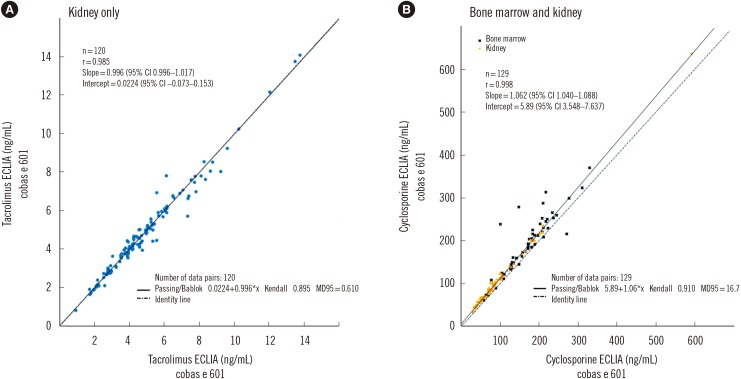
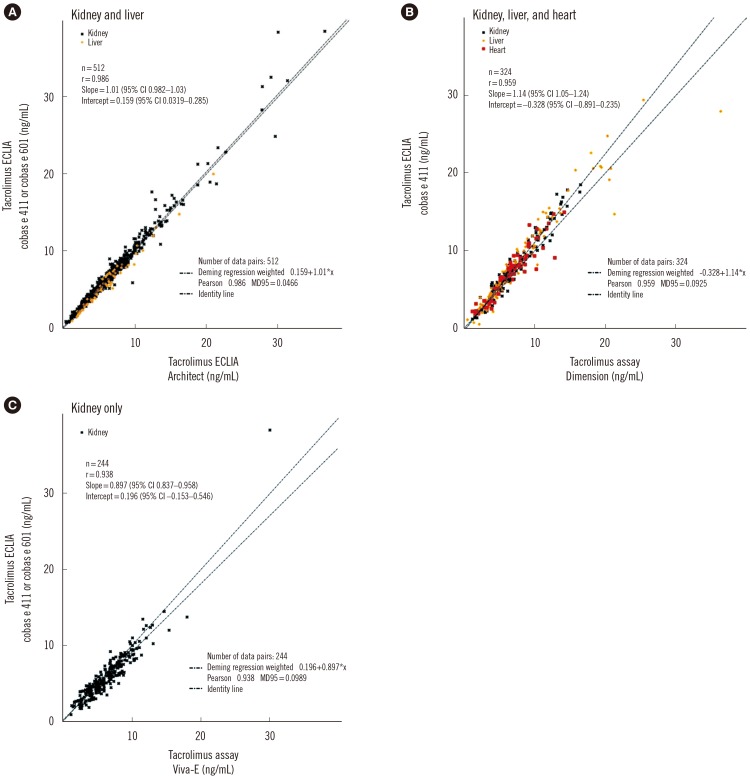
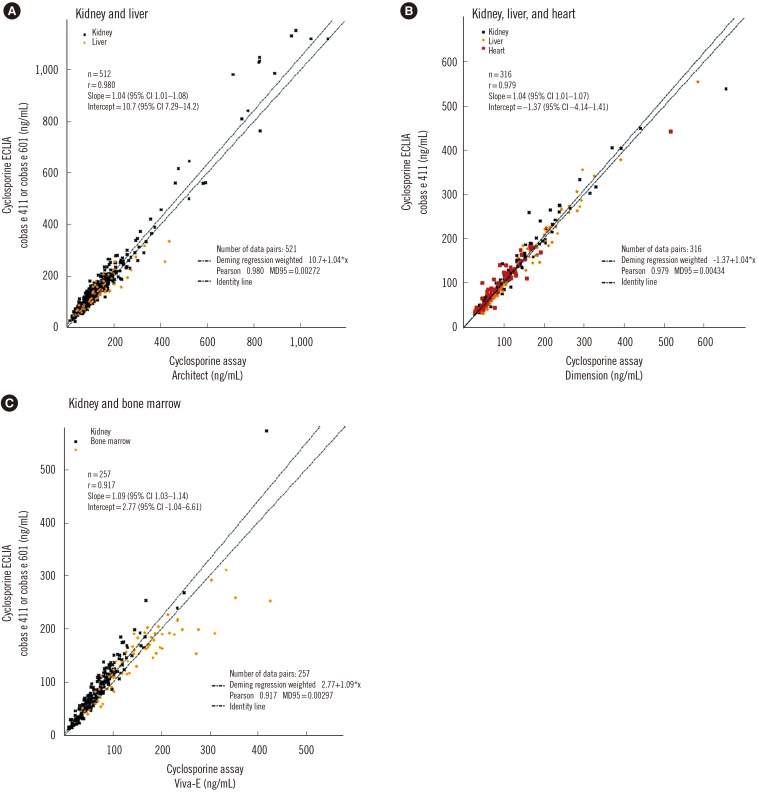
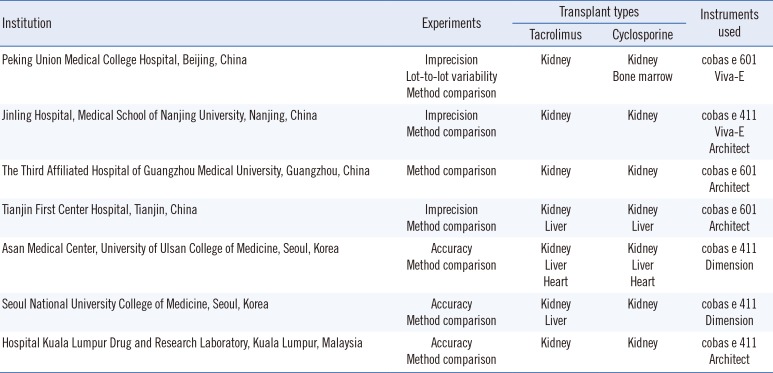
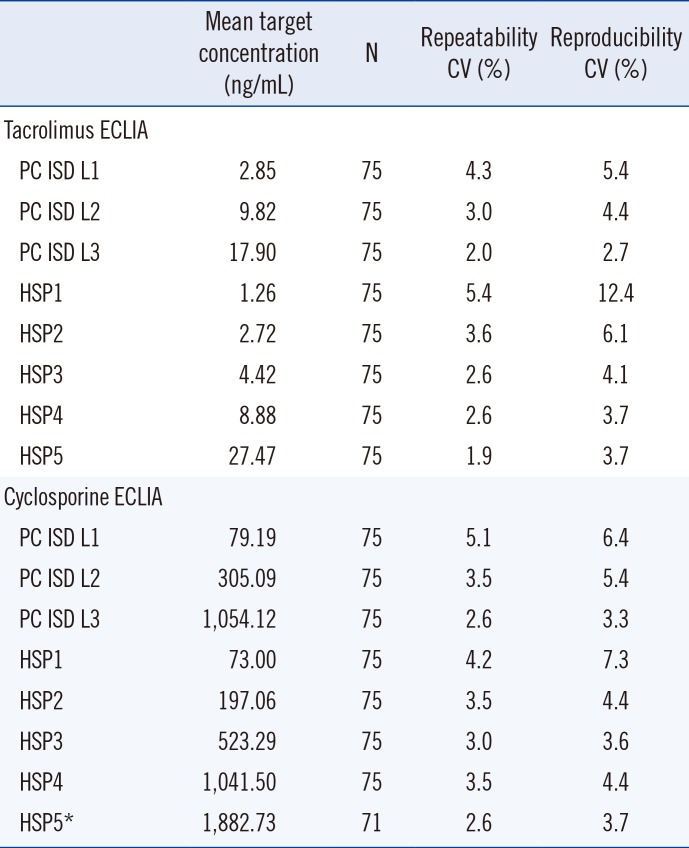




 PDF
PDF ePub
ePub Citation
Citation Print
Print


 XML Download
XML Download